Private First Class Clarence Peter Cambra
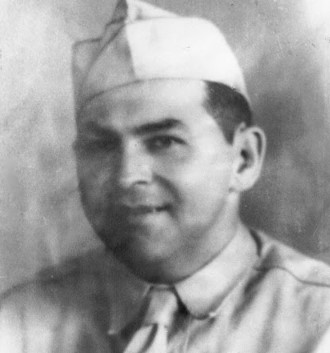
- Unit: 27th Infantry Division, 106th Infantry Regiment, Company A, Platoon 1
- Service Number: 30106809
- Date of Birth: September 25, 1912
- Entered the Military: June 21, 1943
- Date of Death: February 19, 1944
- Hometown: Honolulu, Hawaiʻi
- Place of Death: Eniwetok Atoll, Gilbert Islands
- Award(s): Purple Heart, World War II Victory Medal
- Cemetery: Plot D, Grave 325. National Memorial Cemetery of the Pacific, Honolulu, Hawai’i
Mentored by Mrs. Amy Boehning
Mililani High School
2018-2019
Early Life
From A Large Immigrant Family
Private First Class Clarence Peter Cambra’s Portuguese immigrant parents, Germano “James” and Mary Vierra Cambra moved to Hawaiʻi in 1879 to work as laborers in the sugar industry. After living on the islands of Maui and Hawaiʻi, the family settled in Kaimuki on Oahu, Hawaiʻi.
Peter was the youngest child with four older sisters, Mary, Louise, Rose, and Lucy, and four older brothers, Manuel, Peter, John, and William. His brother, John, moved to Kalaupapa, Molokai, an isolated area where all those diagnosed with leprosy lived. While his two older sisters moved to the mainland following their marriages, Clarence continued to live with his sister, Lucy.
School Year Activities
Cambra attended a private Roman Catholic school, Saint Louis College, today known as Saint Louis School, for the full 12 years of school. For eight of those years, he was an active member of the Holy Name Society, a school-based church organization created for the men of the church as an emotional, spiritual, and physical support group. A star student-athlete, Cambra lead his school to become the reigning champions in track and field.
Honolulu Sports Star
After graduation, Cambra continued with sports, such as soccer and barefoot football. Nicknamed “Toots,” Cambra and his barefoot football sports club team, Pawaa Wonders, became undefeated champions on November 14, 1932. Barefoot football was a popular league sport amongst immigrant kids, which was played to large crowds at Honolulu stadium. Cambra set a record for being able to punt a football into the end zone from the 40-yard line.
Living and Working in Honolulu
Cambra found employment as a timekeeper for the U.S. Navy at Pearl Harbor. He kept track of meeting times as well as who clocked in and out, and he monitored employee’s schedules to ensure that the military was not wasting money or time. Cambra also traveled to San Francisco to see his older sister, her family, and grandparents when his schedule permitted.

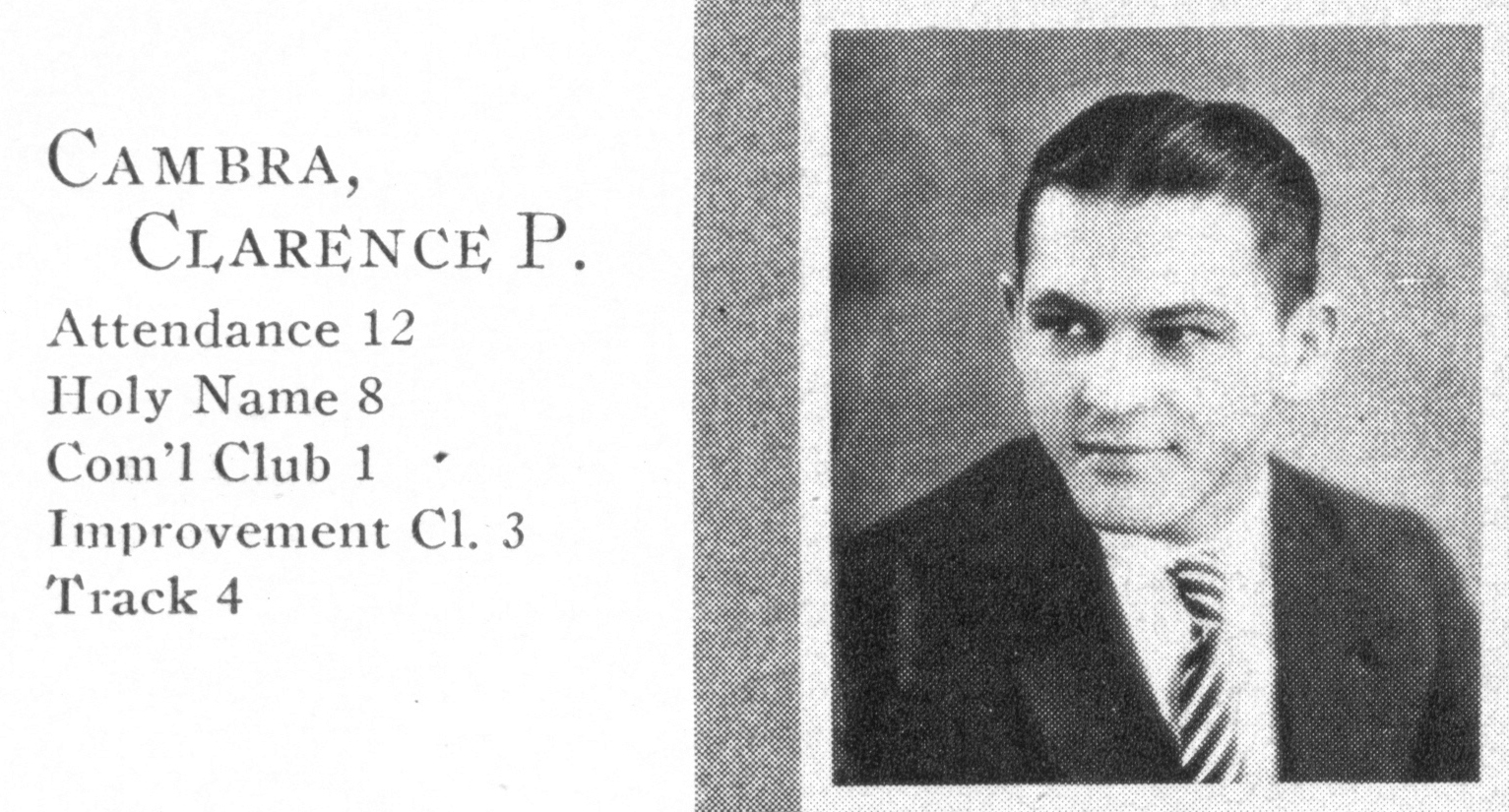
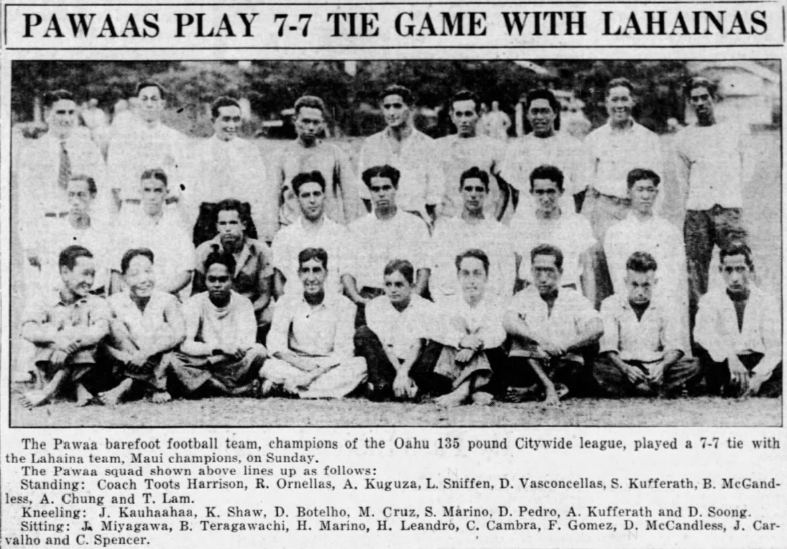
Homefront
Attack on Oahu
On December 7, 1941, the Japanese military bombed Pearl Harbor and other bases on Oahu, Hawaiʻi. The Japanese purposely targeted the airfields and the harbor knowing the U.S. military used those areas to store various aircraft and possibly some aircraft carriers. The Japanese damaged sixteen ships and destroyed three, damaged 159 aircrafts and destroyed 169 aircraft. The Japanese attack also killed 2,403 people including 68 civilians. An additional 1,178 people were wounded, among them, 35 civilians. The bombing led the United States into World War II.
Mobilizing the Homefront
Filled with disbelief and terror at the prospect that the Hawaiian islands could be bombed again, the civilians in Hawaiʻi made huge contributions to the U.S. war effort. Many volunteers and workers helped restore military ships, as well as repair Pearl Harbor Base to former glory. These contributions helped prep the islands for any fighting or military activity in the Pacific Theatre. Community members contributed through rationing and working with different donation drives to collect materials necessary for the war. Many local men joined the military to fight on the frontlines.
Martial Law
Sadly, the newfound determination led to hysteria. Many Americans feared that those of Japanese descent remained loyal to the Japanese government, acting as spies to the Imperial government. On the mainland, President Franklin D. Roosvelt issued Executive Order 9066, establishing internment camps for Japanese immigrants and Japanese Americans. U.S. citizens were forced to live in unsanitary conditions in isolated areas.
Due to the large Japanese immigrant population living in Hawaiʻi, those living in the area experienced harsh lifestyle changes. In Hawaiʻi, martial law called for the territorial government to be temporarily replaced by a military government, which enacted stricter laws restricting people’s usual rights.
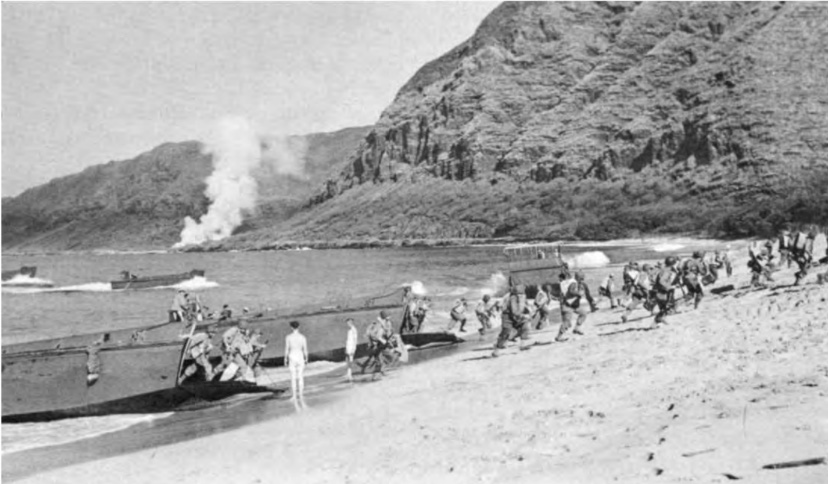
Military Experience
Joining the 106th Infantry Regiment
The U.S. Army drafted Cambra who enlisted on June 21, 1943, and he completed his basic training at Schofield Barracks on Oahu.
Stationed in Kaneohe, Cambra continued training with the 27th Infantry Division’s 106th Infantry Regiment, learning how to traverse obstacle courses, use weapons, and engage in hand to hand combat. Men trained on the beaches and in the jungle. To prepare for island-hopping combat, Cambra’s regiment participated in training at the Waianae Amphibious Training Center for a week to learn about amphibious vehicles and use them in combat.
Preparation for Island Hopping Plan
In November 1943, the 106th Regimental Combat Team learned of their upcoming participation in the invasion of the Marshall Islands. Training from August until December 1943 included a five-day training cruise to Maui. Upon returning from that cruise, Cambra’s regiment learned that their mission had changed slightly. The 1st Battalion was assigned as a floating reserve unit for the invasion force on Kwajalein.
Operation Catchpole
The 106th Infantry Regiment’s assigned Operation Catchpole had three phases: Operation Overbuild for Perry Island, Operation Lilac for Jeroru islet, and Operation Begrudge for Eniwetok Atoll. The operation called for the 27th Division to take control of Enewetak Atoll. The military specifically needed this island due to its proximity to Truk, which had become one of Japan’s most heavily guarded islands and acted as a gateway to Japan. Enewetak Atoll was the perfect spot for an airfield for the American heavy bombers to use as a refueling station. The 1st and 3rd Battalions of the 106th Infantry Regiment sailed for Kwajalein on January 21 as the reserve force.
Battle of Eniwetok
Cambra’s regiment was not needed at Kwajalein and was diverted to Eniwetok on February 15. On February 19, 1944, the 106th Infantry Regiment arrived off shore of Enewetak Atoll. Upon landing, Company A seized Skunk Point, one of the three corners of the island. According to intelligence collected a month earlier, the military believed the island had minimal Japanese defenses. By the time they arrived to the island, the Japanese had fortified the island. U.S. soldiers landing on the island faced heavy artillery fire. Cambra’s company, along with their U.S. Marine Corps counterparts, quickly requested backup. The men suffered heavy enemy fire as they waited. Amidst the fire, Cambra died during the first day of battle on Eniwetok.
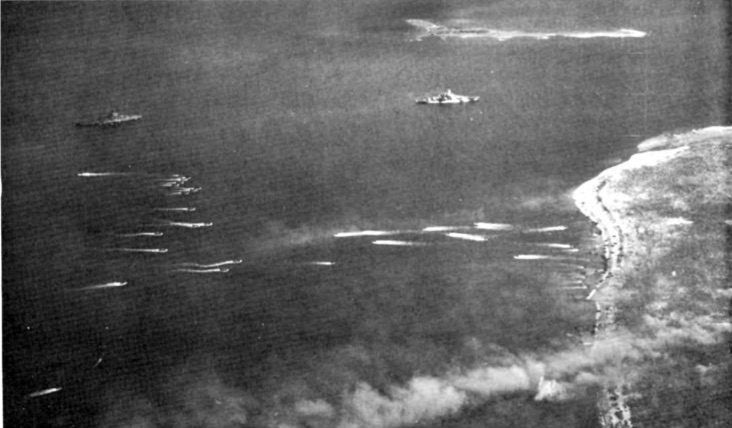
Eulogy
On December 7, 1941, Japan attacked Pearl Harbor and the island of Oahu. After the attack the United States shifted to war mode by rebuilding its navy and supplies line and increasing its size through the draft.
Cambra enlisted on June 21, 1943, and began his training at Schofield Barracks. Afterward, he was assigned to the 27th Infantry Division, 106th Infantry Regiment with his regiment completing beach landing training at the Waianae Amphibious Training Center.
The 27th Infantry Division’s 106th Infantry Regiment was tasked with taking control of Enewetak Atoll. Enewetak Atoll opened the door to taking Truk, the perfect spot for a heavy bomber planes airfield refueling station and for getting close to Japan.
On February 19, 1944, the 106th Infantry Regiment arrived at Enewetak Atoll. Company A was to seize Skunk Point. Upon landing, the soldiers were met with extreme enemy fire, and Cambra’s company requested backup. As the men waited or as they disembarked the amphibious vehicle, Cambra died in the early stage of the first day of battle on Enewetak.
Cambra was a very active man, often enjoying his sports, his church and most importantly his family. Even though he didn’t have a wife or any kids of his own, he got to help raise his nieces and nephews since he had lived with his sister Lucy. We are thankful for Private First Class Clarence Peter Cambra’s service to his country and for the ultimate sacrifice he paid for the rights of many.
Reflection
During the Sacrifice for Freedom®: World War II in the Pacific Student & Teacher Institute I learned how to do quality research and to communicate said research to an audience. I learned how to use various research methods and how to use different resources including newspapers, government sites, and the importance of pictures when putting together someone’s life story. Not only did the program help me build my research skills and my ability to pass on information, but the program also taught me how valuable life is and how much the war both gave and took away. Sacrifice for Freedom has given me the opportunity to see what the impact was on the soldiers family and how families can be torn apart, but the program also showed me the many accomplishments for which those same soldiers fought.
I really enjoyed being able to go see the various sites that became important to World War II, especially since even though I live on the island, there are so many things that I had not seen before. For example, I had never even heard of the Japanese Cultural Center, so being able to see the museum and being able to go to Honouliuli was an interesting experience. I was able to see what the internment camp was like. I experienced the same heat that the prisoners experienced and just being in the same spot that the men and women were once in. It was a different experience living on the same island where all these events took place, yet never seeing or knowing about some of the events. This program opened my eyes to the history of my home and the in depth history of World War II.
Bibliography
Primary Sources
“20 More War Dead to be Interred Thursday.” Honolulu Star Bulletin, August 10, 1949. Newspapers.com (27121180).
“Atkinsons and Pawaas Win Citywide Pennants.” Honolulu Star Bulletin, November 2, 1931. Newspapers.com (27219825).
“Barefoot Kicking Champs Crowned.” Honolulu Advertiser, December 30, 1940. Newspapers.com (28230638).
Cambra, Clarence Peter (PFC); Memorial Record of Residents of Hawaii Who Have Died in Military Service, Casualties (Box 56); Hawaii War Records Depository at University of Hawaii Manoa, Honolulu, HI.
“Cambra Services Next Thursday.” Honolulu Advertiser, August 7, 1949. Newspapers.com (28231403).
Casualties; Hawaii War Records Depository Casualty Files, Box 56; University of Hawaii at Manoa, Honolulu, HI.
“Clarence P. Cambra.” Honolulu, Hawaii, National Memorial Cemetery of the Pacific (Punchbowl), 1941-2011. Digital Images. ancestry.com.
“Clarence P. Cambra.” Honolulu, Hawaii, Passenger and Crew Lists, 1900-1959. Digital Images. ancestry.com.
“Clarence P. Cambra.” U.S. National Cemetery Interment Control Forms, 1928-1962. Digital Images. ancestry.com.
“Clarence P. Cambra.” U.S. Rosters of World War II Dead, 1939-1945. Digital Images. ancestry.com.
“Clarence P. Cambra.” U.S. Veterans’ Gravesites, ca.1775-2006. Digital Images. ancestry.com.
“Clarence P. Cambra.” World War II and Korean Conflict Veterans Interred Overseas. Digital Images. ancestry.com.
“Clarence P. Cambra.” U.S. World War II Army Enlistment Records, 1938-1946. Digital Images. ancestry.com.
“Clarence P. Cambra.” U.S. WWII Draft Cards Young Men, 1940-1947. ancestry.com.
“Clarence P. Cambra.”WWI, WWII, and Korean War Casualty Listings. Digital Images. ancestry.com.
Clarence P. Cambra Military Portrait. Photograph. 1943. Hawaii War Records Depository (Box 56, Clarence P. Cambra). Image.
“Cream of Prep School Talent Will Perform.” Honolulu Star Bulletin, March 10, 1932. Newspapers.com (27219119).
Crusader 1932 Yearbook. Honolulu: Saint Louis College, 1938.
“Germano Cambra Dies; Leaves 79 Descendants.” Honolulu Advertiser, January 29, 1960. Newspapers.com (28217261).
“Germano Cambra Obituary.” Honolulu Star Bulletin,January 28, 1960, 16. Newspapers.com (28216961).
Hawaii. Hilo County. 1900 U.S. Census. Digital Images. ancestry.com.
Hawaii. Honolulu County. 1920 U.S. Census. Digital Images. ancestry.com.
Hawaii. Honolulu County. 1930 U.S. Census. Digital Images. ancestry.com.
Hawaii. Honolulu County. 1940 U.S. Census. Digital Images. ancestry.com.
“Here’s How We Dope Big Meet.” Honolulu Star Bulletin, March 18, 1932. Newspapers.com (27121245).
“Highlight Shots of Trackfest.” Honolulu Star Bulletin, March 21, 1932. Photograph. Newspapers.com (27121356).
“Kalihi Grabs Kicking Honors.” Honolulu Star Bulletin, December 15, 1930. Newspapers.com (28231298).
“Mrs. James Cambra Obituary.” Honolulu Star Bulletin, May 24, 1937. Newspapers.com (27219484).
“Officials Attacked as Pawaa Upsets PALS, 9-6.” Honolulu Advertiser, October 12, 1936. Newspapers.com (28231223).
“Pawaas Garner Citywide Grid Title In 6-0 Game.” Honolulu Star Bulletin, November 14, 1932. Newspapers.com (28232111).
“Pawas Play 7-7 Tie Game with Lahainas.” Honolulu Star Bulletin, November 28, 1932. Photograph. Newspapers.com (28231845).
Records for Clarence Cambra; World War II Army Enlistment Records, 1938-1946 [Electronic File], Record Group 64; National Archives at College Park, College Park, MD [retrieved from the Access to Archival Databases at aad.archives.gov/aad/series-description.jsp?s=3360&cat=WR26&bc=,sl, September 10, 2019].
“Saints Win 1932 Scholastic Trackfest.” Honolulu Star Bulletin, March 21, 1932. Newspapers.com (27121356).
“War Dead Buried Today.” Honolulu Advertiser, August 11, 1949. Newpspapers.com (27121137).
Wilcox, Leslie. “A Home They Don’t Want to Leave.” Honolulu Star Bulletin, September 15, 1975. Newspapers.com (28228595).
Secondary Sources
“Army 27th Infantry Division – World War II.” U.S. Department of Defense video, 20:00. Youtube. youtu.be/kdbTozkKuiE.
Brown, DeSoto, and Anne Ellett. Hawaii Goes to War: Life in Hawaii from Pearl Harbor to Peace. Honolulu: Editions, 1989.
Ching, Shawn. “In Aftermath of Pearl Harbor Attack, Hawaii Grappled with Martial Law.” Video file. Hawaii News Now. December 8, 2016. www.hawaiinewsnow.com/story/34011456/in-aftermath-of-pearl-harbor-attack-hawaii-grappled-with-martial-law/.
Cho, Diane Courtney. Personal interview by the author. July 28, 2019.
Crowl, Philip Axtell, and Edmund G. Love. “Seizure of the Gilberts and Marshalls, United States Army in World War II: The war in the Pacific.” United States Army in World War II: The War in the Pacific. Washington DC: Office of the Chief of Military History, 1955.
Jones, Wilbur D., and Carroll Robbins Jones. Hawaii Goes to War: The Aftermath of Pearl Harbor. Shippensburg: White Mane Books, 2001.
Kaune, Major Charles S. “The National Guard in War: An Historical Analysis of the 27th Infantry Division (New York National Guard) in World War II.” U.S. Army Command and General Staff College, Fort Leavenworth, Kansas, October 12, 1990. apps.dtic.mil/dtic/tr/fulltext/u2/a227332.pdf.
Lee, Lloyd L. In Freedom’s Cause, a Record of the Men of Hawaii Who Died in the Second World War. Honolulu: University of Hawai`i, 1949.
Nakamura, Kelli. “December 7, 1941.” Densho Encyclopedia. Updated 2019. Accessed September 10, 2019. encyclopedia.densho.org/December_7,_1941/.
“Invasion of Eniwetok Atoll.” The National Museum of the U.S. Navy. Accessed September 10, 2019. www.history.navy.mil/content/history/museums/nmusn/explore/photography/wwii/wwii-pacific/gilbert-marshall-islands-campaign/invasion-marshall-islands/invasion-eniwetok-atoll.html.
Rosenfeld, Alan. “Honouliuli (detention facility).” Densho Encyclopedia. Updated 2019. Accessed September 10, 2019. encyclopedia.densho.org/Honouliuli_(detention_facility)/.
Rottman, Gordon L., and Howard Gerrard. The Marshall Islands 1944: Operation Flintlock, the Capture of Kwajalein and Eniwetok. Oxford: Osprey, 2004.
Santana, Pat. E-mail message to author. April 17, 2019.
Scheiber, Jane and Harry Scheiber. “Martial law in Hawaii,” Densho Encyclopedia. Updated 2019. Accessed September 10, 2019. encyclopedia.densho.org/Martial_law_in_Hawaii/.
Weinberg, Gerhard L. World War II: A Very Short Introduction. Oxford, United Kingdom: Oxford University Press, 2014.

